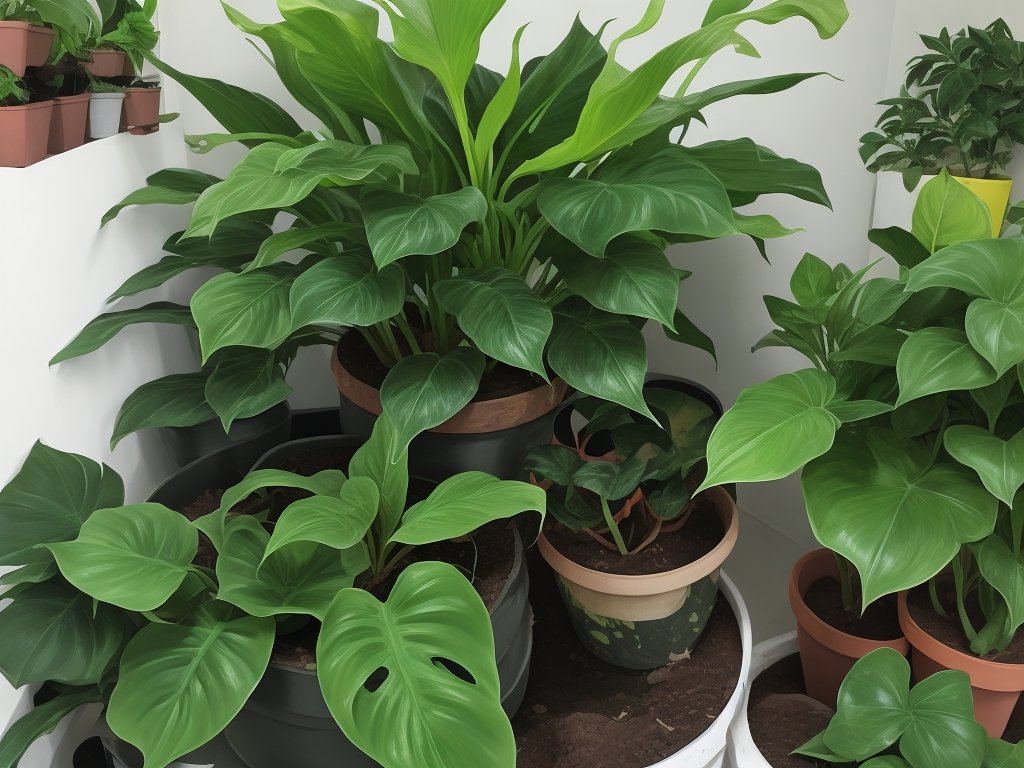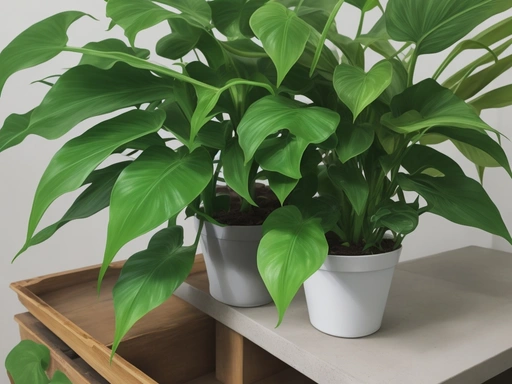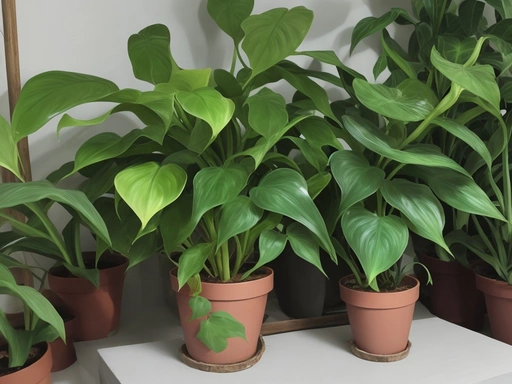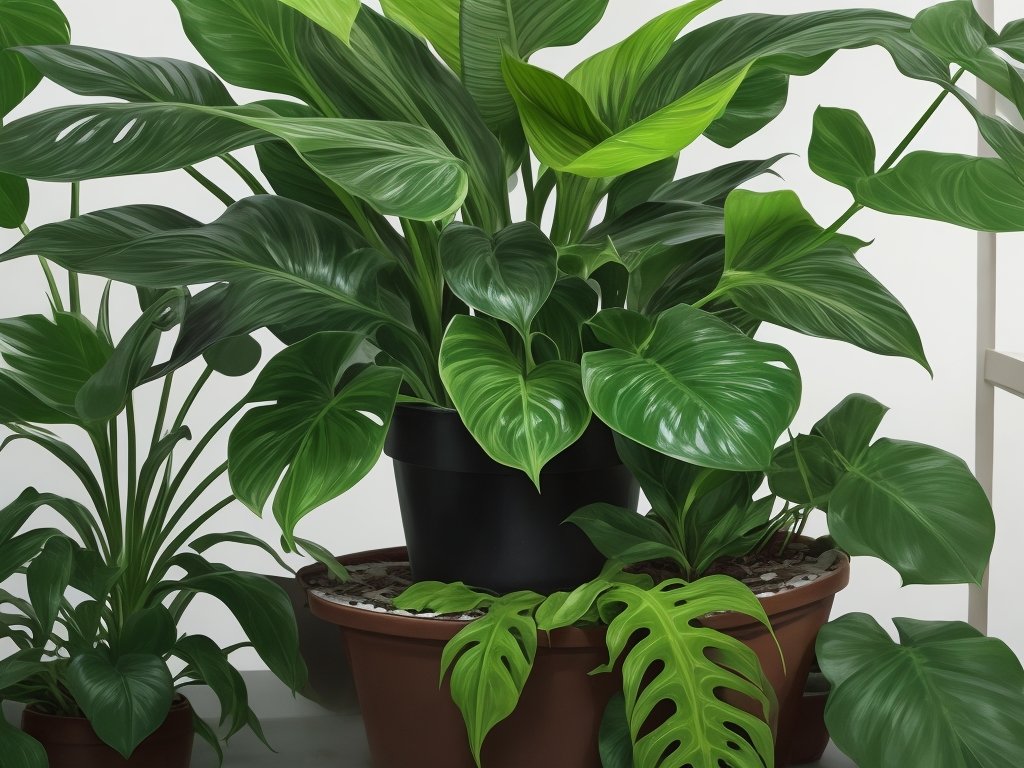Philodendron Light Requirements – Brighten Up Your Space!
Key Takeaways:
- Philodendrons thrive in bright, indirect light.
- Direct sunlight can scorch the leaves of philodendrons.
- Low light conditions can cause leggy growth and lack of variegation in philodendrons.
- Providing the right amount of light is crucial for maintaining healthy and vibrant philodendron plants.
Welcome to the world of philodendrons, where light is a crucial factor for their growth and well-being. Whether you’re a seasoned plant parent or just starting out, understanding the light requirements of these tropical beauties is essential for their success.
In this article, I will dive into the factors that affect philodendron’s light needs, the ideal light conditions for them, and how to adjust their light exposure accordingly.
We will also explore the preferences of different philodendron varieties, addressing the common questions and concerns that arise. So, grab your green thumb and let’s shed some light on philodendron light requirements for healthy, thriving plants.
| Philodendron Varieties | Light Requirements |
|---|---|
| Philodendron Moonlight | Medium to bright indirect light |
| Philodendron Birkin | Bright indirect light |
| Philodendron Brasil | Moderate to bright indirect light |
| Philodendron Heartleaf | Low to bright indirect light |
| Philodendron Xanadu | Medium to bright indirect light |
Understanding Philodendron Light Requirements
Understanding Philodendron light requirements is essential for their overall well-being and growth.
Factors Affecting Philodendron’s Light Needs
There are several factors that affect the light needs of philodendrons. These include the natural habitat of the plant, the amount of light it receives, and the intensity and duration of that light.
The plant’s growth stage and overall health also play a role in determining its light requirements.
Depending on these factors, philodendrons can thrive in a range of light conditions, from bright indirect light to partial shade. It’s important to find the right balance to ensure healthy growth and prevent issues like sunburn or stunted growth.
Ideal Light Conditions for Philodendron
Philodendrons thrive in bright, indirect light.
Avoid direct sunlight as it can scorch their leaves.
They can tolerate lower light conditions, but their growth may slow down.
Place them near a window with sheer curtains or a few feet away from a bright window.
Regularly rotate the plant to ensure even light exposure.
Types of Light for Philodendron
Philodendrons thrive in bright, indirect light.
They prefer medium to high levels of light but can tolerate lower light conditions.
Avoid direct sunlight as it can scorch the leaves.
Fluorescent lights can also be used but should be placed close to the plant.

Signs of Inadequate or Excessive Light
Signs of inadequate light for Philodendron include pale or yellowing leaves, sparse growth, and leggy stems stretching toward the light source.
On the other hand, excessive light can lead to scorched or burned leaves, dark spots, and stunted growth.
Pay attention to these signs to adjust the light exposure for your Philodendron accordingly.
Adjusting Light Exposure for Philodendron
To adjust light exposure for your philodendron, you can try a few things.
If the plant isn’t getting enough light, move it closer to a window or place it under a grow light.
If it’s getting too much light, move it further away from the window or into a slightly shadier area.
Monitor your plant’s response and make adjustments accordingly.

Philodendron Varieties and Their Light Preferences
Different Philodendron varieties have varying light preferences that can range from low to bright indirect light.
Understanding the light requirements of each variety is essential for their growth and overall health.
Philodendron Cordatum (Heartleaf Philodendron)
Philodendron Cordatum, also known as Heartleaf Philodendron, thrives in moderate to bright indirect light.
It can tolerate lower light conditions but may not grow as vigorously.
Avoid direct sunlight as it can scorch the leaves.
Regularly assess the light levels and adjust accordingly to keep this plant happy and healthy.

Philodendron Brasil
Philodendron Brasil requires bright, indirect light to thrive.
It can tolerate some direct sunlight, but too much can scorch its leaves.
It can also adapt to lower light conditions, but growth may slow down.
Provide it with consistent, medium to bright light to keep it happy and healthy.
Philodendron Selloum (Tree Philodendron)
Philodendron Selloum, also known as the Tree Philodendron, requires bright, indirect light to thrive.
It can tolerate some direct sunlight, but too much can scorch its leaves.
Avoid placing it in low-light conditions as it may cause leggy growth.
Remember to rotate your Tree Philodendron periodically to ensure even growth and prevent it from leaning towards the light source.
Philodendron Micans (Velvet Leaf Philodendron)
Philodendron Micans, also known as Velvet Leaf Philodendron, thrives in bright, indirect light.
It can tolerate low light conditions but will grow best in moderate to bright light.
Avoid direct sunlight as it can scorch the leaves.
If the plant isn’t getting enough light, its leaves may fade in color and become leggy.
Ensure a balance of light and shade to keep your Philodendron Micans happy and healthy.
Commonly Asked Questions about Philodendron Light Requirements
Got burning questions about the light requirements for your philodendron? We’ve got the answers right here!
How much sunlight does a philodendron need?
Philodendrons generally prefer bright, indirect light.
They can tolerate a range of light conditions, but too much direct sunlight can burn their leaves, while too little light can cause them to grow leggy and lose their vibrant color.
Aim for a spot where they receive moderate, filtered light throughout the day.
Can philodendron tolerate low light conditions?
Philodendrons can tolerate low light conditions, but they won’t thrive.
They may grow slower and have smaller leaves, and their foliage may become less vibrant.
It’s best to provide them with bright, indirect light for optimal growth.
What happens if a philodendron gets too much light?
If a philodendron gets too much light, it can experience sunburn on its leaves. The leaves may turn yellow or brown, become crispy, and develop dry patches.
Additionally, excessive light can cause the plant to wilt, lose vigor, and struggle to photosynthesize effectively.
It’s important to find the right balance of light for your philodendron to keep it healthy and thriving.
How can I tell if my philodendron is not getting enough light?
If your philodendron is not getting enough light, it will show some common signs.
Look for pale or yellow leaves, slow growth, and leggy, elongated stems.
Additionally, if your plant isn’t producing new leaves or the existing leaves are smaller than usual, it may indicate insufficient light.

Can philodendron survive in fluorescent lighting?
Yes, philodendrons can survive in fluorescent lighting.
Fluorescent lights can provide enough light for philodendrons to thrive, especially if they are placed close to the light source.
However, keep in mind that they may not grow as quickly or be as vibrant as they would in brighter light conditions.
Providing the Right Light for Healthy Philodendron Growth
To ensure healthy Philodendron growth, it’s important to provide the right amount and type of light.
Placement Tips for Indoor Philodendron
To provide the right light for indoor philodendron, place them in a spot with bright, indirect sunlight.
A few feet away from a north or east-facing window is ideal.
Avoid direct sunlight as it can scorch the leaves.
Rotate the plant occasionally for even growth.
Consider supplemental lighting if natural light is limited.
Remember, each philodendron variety may have slightly different light preferences.
Supplemental Lighting for Philodendron
Supplemental lighting for philodendron is beneficial when natural light is limited or inadequate. Using LED grow lights with a spectrum of blue and red wavelengths can help promote healthy growth.
Make sure to place the lights about 12-18 inches away from the plant and keep them on for 10-12 hours a day.
Additionally, rotating the plant every few weeks ensures even light exposure.
Adjusting Light Exposure for Outdoor Philodendron
To adjust the light exposure for outdoor philodendron, you can either move it to a more shaded area or gradually introduce it to more sunlight.
Start by placing it in an area with filtered light, such as under a tree or on a covered patio.
Then, over time, gradually move it to a spot with more direct sunlight.
This way, you can help your outdoor philodendron adjust to different light conditions without shocking it.
Caring for Philodendron in Different Light Conditions
Understanding Philodendron Light Requirements is essential for caring for these plants in different light conditions. Factors such as intensity, duration, and direction of light affect their growth.
Philodendrons thrive in indirect, bright light.
If you have low light, consider placing your philodendron closer to a window or providing artificial lighting. Too much direct sunlight can burn the leaves, so it’s important to avoid placing them in intense, direct sunlight.
Regularly monitor your philodendron for signs of inadequate or excessive light and adjust its exposure accordingly.
Final Verdict
Understanding the light requirements of your philodendron is crucial for ensuring its health and well-being. Factors such as intensity, duration, and quality of light can greatly affect the growth and appearance of your plant.
By providing the ideal light conditions and adjusting exposure as needed, you can help your philodendron thrive.
Different philodendron varieties may have specific light preferences, so it’s important to research and cater to their individual needs. Additionally, addressing common questions about philodendron light requirements can help you make informed decisions for your plant.
Remember, providing the right light is key to ensuring healthy growth and vibrant foliage for your philodendron.






